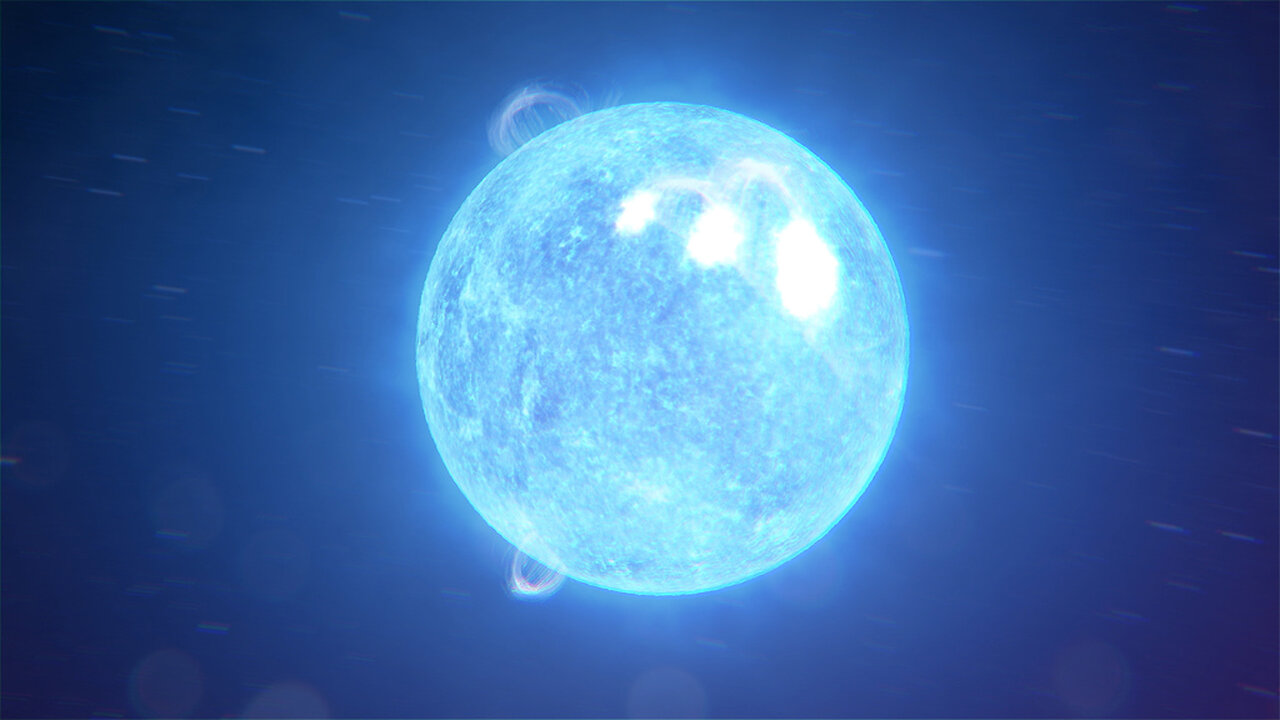Premium Only Content

NASA's NICER Tracks A Magnetar's Hot Spots
NICER tracked how three bright, X-ray-emitting hot spots slowly wandered across the object’s surface while also decreasing in size, providing the best look yet at this phenomenon. The largest spot eventually coalesced with a smaller one, which is something astronomers haven’t seen before
A magnetar is a type of isolated neutron star, the crushed core left behind when a massive star explodes. Compressing more mass than the Sun’s into a ball about 12 miles (20 kilometers) across, a neutron star is made of matter so dense that a teaspoonful would weigh as much as a mountain on Earth.
What sets magnetars apart is that they sport the strongest magnetic fields known, up to 10 trillion times more intense than a refrigerator magnet’s and a thousand times stronger than a typical neutron star’s. The magnetic field represents an enormous storehouse of energy that, when disturbed, can power an outburst of enhanced X-ray activity lasting from months to years.
On Oct. 10, 2020, NASA’s Neil Gehrels Swift Observatory discovered just such an outburst from a new magnetar, called SGR 1830-0645 (SGR 1830 for short). It’s located in the constellation Scutum, and while its distance is not precisely known, astronomers estimate that the object lies about 13,000 light-years away. Swift turned its X-Ray Telescope to the source, detecting repeated pulses that revealed the object was rotating every 10.4 seconds.
NICER measurements from the same day show that the X-ray emission exhibited three close peaks with every rotation. They were caused when three individual surface regions much hotter than their surroundings spun into and out of our view.
NICER observed SGR 1830 almost daily from its discovery to Nov. 17, after which the Sun was too close to the field of view for safe observation. Over this period, the emission peaks gradually shifted, occurring at slightly different times in the magnetar’s rotation. The results favor a model where the spots form and move as a result of crustal motion, in much the same way as the motion of tectonic plates on Earth drives seismic activity.
The team thinks these observations reveal a single active region where the crust has become partially molten, slowly deforming under magnetic stress. The three moving hot spots likely represent locations where coronal loops – similar to the bright, glowing arcs of plasma seen on the Sun – connect to the surface. The interplay between the loops and crustal motion drives the drifting and merging behavior.
-
 2:41:11
2:41:11
Canal Paulo Figueiredo
2 days agoPedro Valente Debunks The Myths of Jiu-Jitsu History
29.9K6 -
 2:01:46
2:01:46
vivafrei
6 hours agoEp. 254: China to Pay $24 BILLION? Who Owns Embryos? Tulsi was RIGHT on Syria! Prorogation & MORE!
129K90 -
 3:40:55
3:40:55
MyronGainesX
16 hours ago $14.36 earnedFormer Fed Explains Gabby Petito's Murder
60.9K20 -
 2:18:05
2:18:05
Nerdrotic
7 hours ago $7.99 earnedInvestigations into the Unknown with Micah Hanks | Forbidden Frontier #093
63.2K16 -
 18:54
18:54
The Rubin Report
11 hours agoHow One Woman Outsmarted Pornhub & Exposed Its Dark Secrets | Laila Mickelwait
136K95 -
 LIVE
LIVE
Major League Fishing
5 days agoLIVE! - Bass Pro Tour: Stage 3 - Day 4
688 watching -
 1:05:28
1:05:28
Sports Wars
14 hours agoLebron GOES OFF Over Bronny Hate, Pereira LOSES Belt To Ankalaev At UFC 313, Xavier Worthy Arrested
97.4K11 -
 10:27
10:27
Tactical Advisor
1 day agoDMR or SPR for Civilian Use?
96.2K6 -
 8:21
8:21
DEADBUGsays
1 day agoThe Crossbow Killer
92.1K13 -
 8:40
8:40
Tundra Tactical
1 day ago $12.96 earnedThe Executive Order Wishlist.
98K6